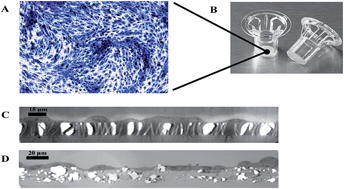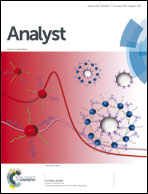A TEM protocol for quality assurance of in vitro cellular barrier models and its application to the assessment of nanoparticle transport mechanisms across barriers†
Abstract
We report here a protocol to characterise and monitor the quality of in vitro human cellular barrier models using Transmission Electron Microscopy (TEM), which can be applied for transport assays, mechanistic studies and screening of drug/compound (including nanoparticle) penetration across such biological barriers. Data from two examples of biological barriers are given, namely the hCMEC/D3 endothelial blood–brain barrier model, and the Caco-2 intestinal epithelial barrier model, to show the general applicability of the method. Several aspects of this method are applicable to the quality assurance of in vitro barrier models, e.g., assessment of the multi or mono-layer structure of the endothelial cells; identification of any potential “holes” in the barrier that could confound transport assay results; validation of tight junction expression; and determination of the types and amounts of key cellular organelles present in the barrier to account for any significant changes in phenotype that may occur compared to the in vivo situation. The method described here provides a key advantage in that it prevents loss of the filter membrane during monolayer sectioning, thereby preserving critical details associated with the basal cell membrane. Applicability of the protocol for other in vitro biological barriers, such as the blood–foetus, blood–testes, blood–cerebrospinal fluid (CSF) and lung alveolar–capillary barriers is also discussed. Additionally, we demonstrate the use of the method for assessment of nanoparticle transport across cellular barriers and elucidation of transcytosis mechanisms. Sequential events of cellular endocytosis, localisation and transcytosis can be described in detail by TEM imaging, revealing useful sub-cellular details that provide evidence for the mechanism of nanoparticle transport in the hCMEC/D3 blood–brain barrier model and the Caco-2 intestinal epithelial cell model. Potential artefacts resulting from the nanoparticles interacting with the Transwell membranes can also be assessed.

- This article is part of the themed collection: Analytical Sciences in the UK

 Please wait while we load your content...
Please wait while we load your content...